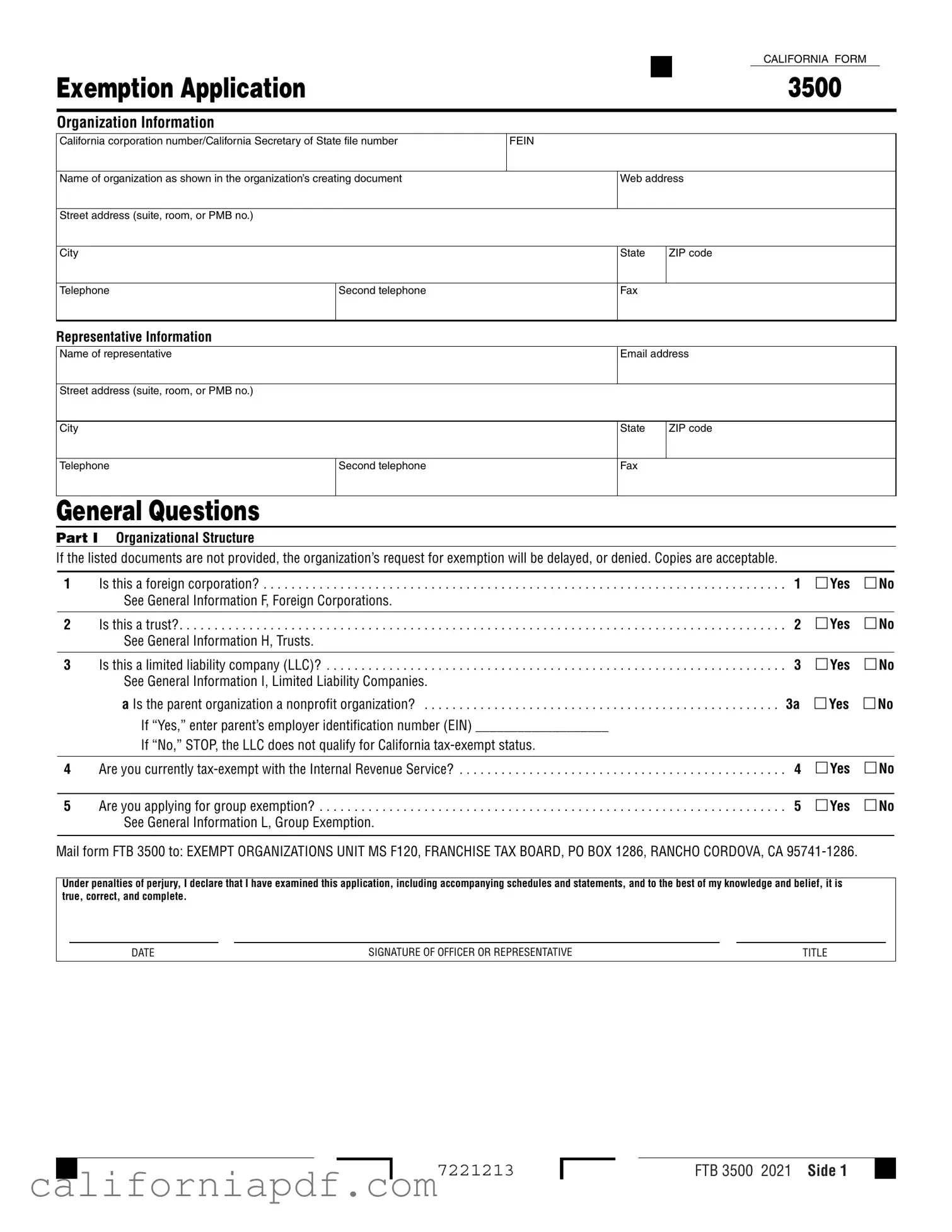The IRS Form 1023, Application for Recognition of Exemption Under Section 501(c)(3) of the Internal Revenue Code, shares similarities with the California Form 3500 in purpose and structure. Both forms are used by organizations seeking tax-exempt status, with Form 1023 focusing on federal exemption by the IRS and Form 3500 for state-level exemption in California. They require detailed information about the organization’s structure, activities, financial data, and governance to assess eligibility for tax-exempt status.
Form 990, Return of Organization Exempt from Income Tax, shares a commonality with parts of the California Form 3500, especially in the financial reporting section. While Form 3500 is for applying for tax-exempt status, Form 990 is an annual reporting return that certain federally tax-exempt organizations must file with the IRS. Both necessitate disclosure of financial information, including revenue and expenses, to maintain transparency and compliance with tax laws.
The California Form 199, Exempt Organization Annual Information Return, is akin to the financial data section of the California Form 3500. Form 199 is required for tax-exempt organizations in California to annually report their financial activities. Similar to part of the Form 3500 preparation process, it demands a detailed account of income, expenses, and changes in net assets to ensure the organization continues to operate within the boundaries of its exempt purposes.
Form 1024, Application for Recognition of Exemption Under Section 501(a) of the Internal Revenue Code, differs from Form 1022 in that it is used by organizations seeking tax-exempt status under codes other than 501(c)(3). Form 3500 and Form 1024 share the principle of providing comprehensive details about the organization's purpose, activities, and governance structure to prove they meet specific exemption criteria set by the respective tax authority.
Form 1041, U.S. Income Tax Return for Estates and Trusts, relates indirectly to California Form 3500 in the context of trusts declaring their activities and financial status. When trusts apply for tax-exempt status using Form 3500, they must disclose pertinent details similar to what's required on Form 1041 for taxation purposes, although the latter is focused more on annual income than exemption qualification.
The California Form 3500A, Submission of Exemption Request, is directly related to Form 3500 but serves a simpler purpose. For organizations that already have a federal exemption determination letter, Form 3500A provides a streamlined process to obtain California tax-exempt status. They both require information on organizational structure and exempt activities, but Form 3500A typically involves less documentation due to reliance on existing federal exemption recognition.
Form SS-4, Application for Employer Identification Number (EIN), though primarily for obtaining an EIN, can precede the submission of California Form 3500 as part of the organizational setup process. Accurate identification and contact information are crucial for both forms, laying the groundwork for an organization's compliance and tax-exempt filing requirements.
Form FTB 199N, California e-Postcard, is for small tax-exempt organizations in California to annually report basic information. This form and the California Form 3500 both ensure organizations meet ongoing compliance with state tax regulations, albeit at different stages and complexities of the organization's lifecycle.
The Uniform Application for Exemption, used in some jurisdictions, like the Multistate Registration and Filing Portal, parallels the California Form 3500 in its utility for non-profit registration and tax exemption on a broad level. Both forms gather detailed organizational information to evaluate and maintain tax-exempt status, emphasizing compliance with regulatory standards across different areas of operation.
Last, the Statement of Information (Form SI-100) required by the California Secretary of State for most entities, including non-profit corporations, connects with California Form 3500 in maintaining organizational compliance. While Form SI-100 updates or confirms basic entity information biennially, Form 3500 delves deeper, validating the non-profit's eligibility for state-level tax exemption initially and potentially upon renewal.










